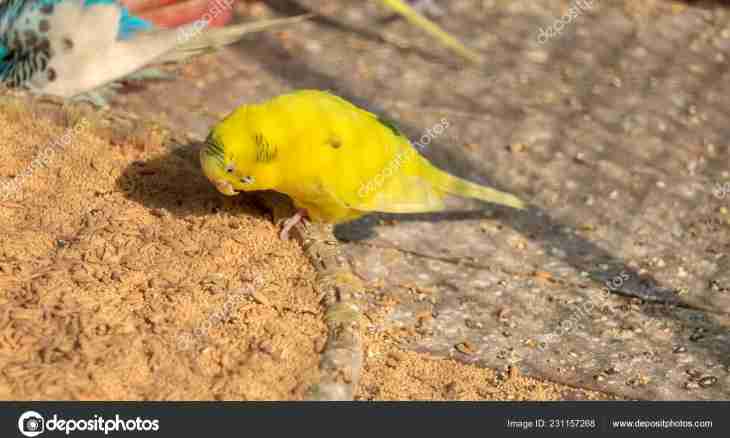In 9 cases from the 10th the negligent relation of owners becomes an etiology of a parrot: low-quality forage, insufficiency of lighting, lack of vitamins B daily diet of a bird, bad cleaning of a cage and room in general. All this reduces immunity of a parrot and does it subject to a set of diseases.
Instruction
1. All diseases of parrots can be divided into several groups. The first group – alimentary diseases. Feeding only by a grain forage or on the contrary mainly vegetables and fruit, a reforage grains of one of types, lack of access at a bird to mineral fertilizing becomes their reasons. Such diseases can be determined by the following signs: the parrot moves a little, the liquid dung, apathetic sitting on a pole on two pads, total or partial rejection of a forage is not interested in a swing, toys, a hand bell.
2. Parasitic diseases belong to the second group of diseases. The exact diagnosis can be defined only in vitro. For this purpose it is necessary to show a bird to the veterinarian-ornithologist. Almost for certain he will ask to bring to laboratory a dung of a bird and her dropped-out feathers for the analysis. Parasitic diseases are shown as causeless deplumation by a parrot of the feathers, emergence of outgrowths on a beak, a voskovitsa and pads (usually white, gray or brown color), loss of the broken-off feathers. On the feathers which dropped out or pulled out by a bird sometimes it is possible to notice something similar not dirt on a dense part of a feather (at the basis), openings on an axis of a feather, "pro-line" on the feather.
3. The third group – diseases of infectious character. They meet rather seldom: the majority of human viruses to a parrot are not terrible, and bird's viruses at the correct contents could not be "caught" simply. Infectious diseases are shown as dacryagogue, release of secretion of their beak and a voskovitsa, a liquid yellow or bright green dung, apathy. Rather often the parrot refuses from a forage, but begins to drink much more water, than earlier.
4. Carry usually various injuries to the fourth group: bruises, cuts, fractures and other mechanical damages. Symptoms of a trauma can often be seen: the parrot shivers, unnaturally turns in one of pads, incorrectly puts wings or holds them lowered, on feathers blood or slime is visible, it is heavy to bird to hold the head, the body is filled up sideways, the parrot cannot keep on a pole and sits at the bottom of a cage.
5. It is possible to carry diseases of internals to the fifth group. It is impossible to define them with the naked eye. Even the ornithologist can not always precisely make the diagnosis. One of the most widespread diseases of this category are liver diseases. They arise at abundance in a daily diet of a bird of a forage with high content of fat, for example, of sunflower sunflower seeds. Internals suffer and in case to a bird even occasionally to allow to regale on "human" food: pasta, chocolate, fresh white loaf, sausage and so on.
